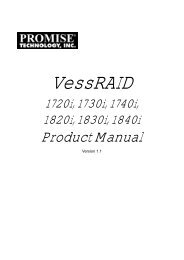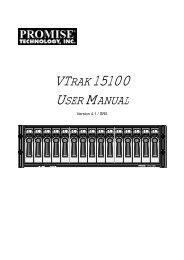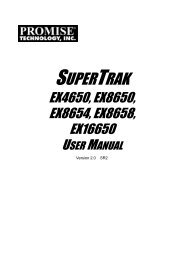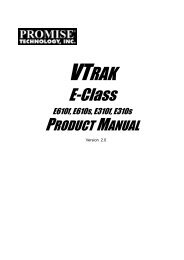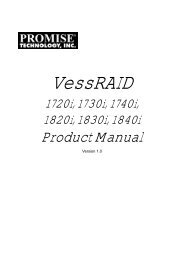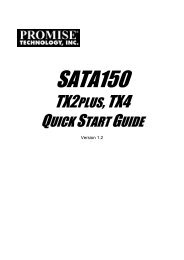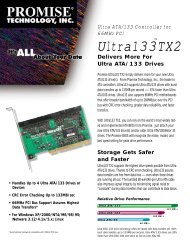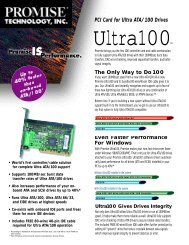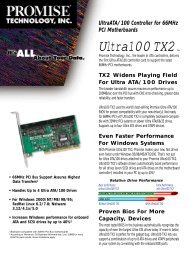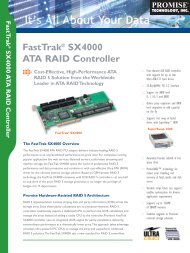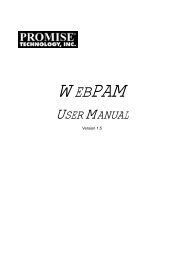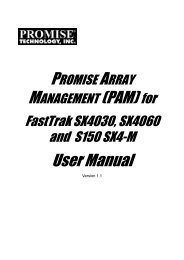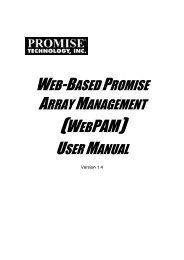SmartStor NS4600 Product Manual - Promise Technology, Inc.
SmartStor NS4600 Product Manual - Promise Technology, Inc.
SmartStor NS4600 Product Manual - Promise Technology, Inc.
Create successful ePaper yourself
Turn your PDF publications into a flip-book with our unique Google optimized e-Paper software.
Viewing an External USB Drive or Memory Stick<br />
151<br />
Chapter 7: PASM<br />
To view a USB drive or memory stick attached to the <strong>SmartStor</strong>:<br />
1. In the Tree, click the + beside the RAID & File System icon.<br />
2. Click the RAID Management icon.<br />
The USB drive or memory stick appears as a USB External Disk<br />
3. Click the File System Management icon.<br />
The USB drive or memory stick appears as a Volume called USBDISK.<br />
You do NOT create a RAID Volume or folders with the USB drive or memory stick<br />
as you would with the disk drives installed in the <strong>SmartStor</strong> enclosure.<br />
With the USB drive or memory stick connected to the <strong>SmartStor</strong>, create a<br />
network drive on your PC and choose the USB disk as the folder. Then you can<br />
access the USB drive or memory stick from your PC.<br />
See “Chapter 3: Connecting to the <strong>SmartStor</strong>” on page 29 for more information.<br />
Formatting an External USB Drive or Memory Stick<br />
This option only appears when <strong>SmartStor</strong> does not recognize the file system on<br />
the USB drive or memory stick.<br />
Caution<br />
When you format a USB drive or memory stick, you delete all the<br />
data saved on it. Back up any important data before you format.<br />
To format a USB drive or memory stick:<br />
1. Attach the USB drive or memory stick to one of the USB ports on the back of<br />
the <strong>SmartStor</strong>.<br />
2. In the Tree, click the + beside the RAID & File System icon.<br />
3. Click the File System Management icon.<br />
4. On the File System Status tab, highlight the USB drive.<br />
5. From the Format File System Type dropdown menu, choose a file system:<br />
• FAT 32 – Use for Windows, Linux, and Macintosh PCs, and <strong>SmartStor</strong><br />
• Ext3 – Use for UNIX and Linux PCs, and <strong>SmartStor</strong><br />
6. Click the Format USB Disk button.<br />
7. In the confirmation box, type yes, then click the OK button.<br />
Formatting requires several minutes, depending on the size of your USB drive or<br />
memory stick.



